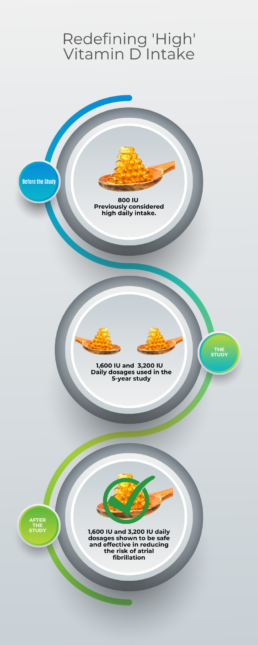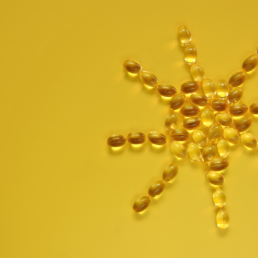The Potato Diet - Is It Legit?
The potato diet has gained attention as a simple, short-term weight loss strategy. Essentially, it involves eating only potatoes for a certain period, typically three to five days. This diet emphasizes consuming plain, cooked potatoes without adding toppings or condiments that increase calorie intake. The diet capitalizes on the nutritional value of potatoes and starch, which are rich in fiber, vitamins, and minerals. It is also low in calories. Proponents argue it can help with weight loss, improve digestion, and reduce inflammation and reset your gut.
Is The Potato Diet Legit?
The potato diet capitalizes on the nutritional profile of potatoes, which are rich in fiber, vitamins, and a particularly beneficial type of starch known as resistant starch. Resistant starch passes through the stomach and small intestine undigested. It then reaches the colon where it serves as food for beneficial gut bacteria. Because it feeds the bacteria it potentially helps by resetting and improving gut health. This process can lead to a more balanced gut microbiome, which is crucial for overall health, digestion, and even immune function.
The diet’s restrictive nature can help re-calibrate taste preferences, reducing cravings for overly processed, sugary, and fatty foods. By limiting food choices to plain potatoes, individuals may find their desire for unhealthy foods diminishes over time. It aids in the development of healthier eating habits. The monotony of the diet could also lead to a more mindful approach to eating, as individuals become more attuned to their hunger cues and satiety signals, rather than eating out of boredom or for emotional reasons.
The potato diet’s focus on a single, whole food also simplifies eating decisions. This potentially makes it easier for individuals to stick to a diet plan without the need for complicated recipes or calorie counting. This simplicity can be a breath of fresh air for those who have struggled with more complex diet regimes. As individuals progress through the diet, they might notice an improvement in their digestion and a reduction in symptoms such as bloating, thanks to the gut-friendly effects of resistant starch.
Additionally, the diet encourages the intake of a food that is naturally low in calories yet high in volume, which can lead to a feeling of fullness and satisfaction after meals, potentially aiding in weight loss without the sensation of deprivation. This aspect, coupled with the diet’s potential to foster a healthier gut microbiome, makes the Potato Diet a fascinating approach to not only resetting one’s digestive system but also to laying the foundation for long-term healthy eating habits.
The Potato Diet is certainly unique in its approach, its potential benefits for gut health, alongside its simplicity and the possibility to reset dietary preferences away from unhealthy options, make it a compelling option for those looking to improve their overall health and well-being. By focusing on the humble potato, this diet offers a straightforward, nutritionally grounded method for individuals seeking to enhance their digestive health, recalibrate their taste buds, and embark on a journey towards healthier eating habits.
Key Features of the Potato Diet
-
- Simplicity: The diet is straightforward, requiring individuals to eat only potatoes.
- Duration: It’s designed for short-term adherence, usually around three to five days.
- Nutritional Content: Potatoes provide essential nutrients, including vitamin C, potassium, and dietary fiber.
- Caloric Restriction: The diet naturally limits calorie intake, which can lead to weight loss.
How It Works
Participants consume 2-3 pounds of potatoes daily, avoiding all other foods. The potatoes should be cooked without oil, butter, or any rich sauces. Seasonings are allowed, but they should be low in calories. The high fiber content in potatoes contributes to a feeling of fullness, potentially reducing overall calorie intake.
Potential Benefits and Drawbacks
Benefits:
-
- May promote quick weight loss due to low calorie intake.
- High in certain nutrients that are essential for health.
- Simple and easy to follow.
Chelation Therapy and Heart Disease: A Deep Dive into Potential Benefits
Chelation Therapy and Heart Disease. Cardiovascular disease remains one of the leading causes of mortality worldwide. With myriads of available treatment options, a less-known but intriguing approach has emerged: Chelation Therapy.
Rooted in its primary use for heavy metal poisoning, chelation for heart disease has garnered attention, thanks in part to studies like the TACT (Trial to Assess Chelation Therapy). This article delves into the potential benefits of chelation therapy for heart disease, anchoring our exploration in the findings of the TACT.
Understanding Chelation Therapy
Before we proceed, it’s essential to grasp what chelation therapy entails. At its core, chelation involves the administration of chelating agents that bind to metal ions in the body. This process facilitates the removal of these metals, initially used to treat heavy metal poisoning. The keyword here is ‘bind’: the chelating agents ‘grab’ these metals, allowing them to be safely excreted.
Research has explored the idea that chelation might also bind to calcium deposits in the arteries. The hypothesis? By reducing calcium-based plaque build-up, there’s potential to improve blood flow, addressing one of the core issues in heart disease.
The TACT (Trial to Assess Chelation Therapy)
The TACT study is arguably the most comprehensive exploration of chelation therapy’s role in heart disease done to date. Initiated in 2003, this study was designed to assess the safety and efficacy of EDTA (ethylene diamine tetra-acetic acid) chelation therapy in individuals with a history of myocardial infarction ( heart attacks ).
Promising Findings from TACT
Reduction in Adverse Cardiovascular Outcomes:
The TACT indicated that chelation therapy could lead to a modest reduction in cardiovascular events. The findings suggested that those receiving chelation therapy experienced fewer subsequent heart issues when compared to the placebo group.
Beneficial for Diabetes Patients:
One of the most notable revelations from the TACT was the pronounced benefit observed among patients with diabetes. The trial showed that diabetic participants had a 41% relative reduction in the risk of any cardiovascular event and a 43% reduction in the risk of death from any cause.
Safety:
An essential facet of the TACT was its rigorous monitoring for potential side effects. The findings affirmed the relative safety of chelation therapy when administered under appropriate medical supervision.
Supporting data from the TACT provides a foundation for understanding how chelation therapy could play a role in modern cardiology, especially in specific subsets of patients like those with diabetes.

TACT2 Study
TACT2 was a study that looked at how EDTA chelation treatment might help heart health, especially for people with diabetes. Here’s what they found:
Blood Sugar Levels Stayed Stable:
This treatment didn’t seem to change people’s blood sugar levels much. Whether they were on the treatment or a placebo (a fake treatment), their blood sugar levels stayed about the same. No surprise here, really, though.
Diabetes Medication Needs Didn’t Change Much:
Most people with diabetes still needed the same amount of diabetes medicine after the study, whether they had the real treatment or the placebo. Again no surprise.
Heart Benefits for Those with Diabetes:
This is where things get interesting! People with diabetes who got the real treatment had fewer major heart problems. They did 41% better than those on the placebo.
There were also fewer other heart issues in the treated group.
In simple terms, TACT2 found that this EDTA chelation treatment might be a pretty good option for the hearts of people with diabetes.
The Mechanism: How Does Chelation Impact Heart Disease?
The underlying mechanism of how chelation affects heart disease is multifaceted. One dominant theory aligns with the chelation’s inherent action of binding metals. By reducing the metal-catalyzed oxidative stress, chelation therapy might prevent the oxidative modification of LDL cholesterol, a significant contributor to atherosclerosis.
Additionally, by removing calcium deposits, chelation might lead to the regression of plaque build-up in the arteries. This process would inherently improve blood flow, a crucial factor in cardiovascular health.
Looking Ahead: The Future of Chelation Therapy and Heart Disease
With the TACT providing a robust foundation, the intrigue surrounding chelation therapy in cardiology is undeniable. While the treatment isn’t mainstream, its potential benefits warrant further exploration, especially for specific patient groups.
Future studies might delve deeper into understanding which patient profiles stand to benefit the most. For instance, will the pronounced benefits observed in diabetic patients be replicated in larger, more diverse cohorts?
Why Chelanox Can Help with Heart Health
Ingredients & Research
Chelanox stands out in the world of chelation supplements because its potent ingredients specifically target and bind to heavy metals in the body, assisting in their removal. If left unchecked, these heavy metals can contribute to various health issues, including cardiovascular problems.
Ingredients in Chelanox:
EDTA (Ethylenediaminetetraacetic acid):
EDTA is a well-known chelating agent. A landmark study, the TACT (Trial to Assess Chelation Therapy) that we mentioned earlier found that a combination of EDTA and high-dose vitamin therapy significantly reduced cardiovascular events, particularly in diabetic patients.
Other Ingredients:
- Chlorella Algae: Chlorella is believed to have detoxifying properties, particularly in binding and eliminating heavy metals and other toxins from the body.
- Modified Citrus Pectin: A form of pectin that is altered to be more easily absorbed by the digestive tract. It has been studied for its potential ability to inhibit the spread of certain cancer cells and also for its chelating properties, particularly for lead, cadmium, and mercury.
- Cilantro Leaf Extract 4:1: Cilantro, also known as coriander, has been suggested in some studies to help eliminate heavy metals from the body, although this is an area of ongoing research.
- Shilajit 10:1 Extract: An ancient traditional medicine, shilajit contains fulvic acid and various minerals. It’s been proposed to have a potential role in detoxification and also boasts antioxidant and anti-inflammatory properties.
- Zeolite: Zeolites are minerals with a cage-like structure that can capture certain molecules, including some heavy metals, making them of interest in detoxification.
- NAC (N-Acetylcysteine): A powerful antioxidant that can boost glutathione levels in the body, a vital antioxidant for liver detoxification. It can also act as a chelator for heavy metals.
- Alpha Lipoic Acid: Known for its antioxidant properties, it helps protect the body’s cells from damage. It has also shown potential as a chelator for heavy metals.
- Uva Ursi Leaf Powder: Traditionally used for urinary tract infections due to its antibacterial properties, it can also have a diuretic effect helping to flush the kidneys and urinary system gently.
- Milk Thistle Seed Powder: Known for its liver-protective effects, it can boost liver health and assist in detoxification processes.
The blend of these ingredients in Chelanox suggests a combination of traditional chelating agents with herbal and natural components that have historically been associated with detoxification. The Chelanox formula supports the body’s natural detoxification processes, enhancing liver health, and possibly aiding in removing certain toxins, including heavy metals.
Ultimate Nitric Oxide Nutrition by Bionox – The Perfect Pairing
Ultimate Nitric Oxide Nutrition serves as a potent supplement that supports heart health. Nitric oxide is a molecule that plays a crucial role in vascular function, aiding in the dilation of blood vessels and promoting blood flow.
Ingredients & Benefits of Ultimate Nitric Oxide Nutrition
L-arginine and L-citrulline:
These amino acids are precursors to nitric oxide. Studies, such as one published in the American Journal of Cardiology, have indicated that they can help improve endothelial function and potentially reduce blood pressure.
Antioxidant-rich components:
The Ultimate Nitric Oxide Nutrition formula contains other ingredients, such as vitamins C, E, and D, that combat oxidative stress, which can damage the cardiovascular system. Many of the herbal ingredients, such as grape seed extract, also help in similar ways.
Combining Chelanox and Ultimate Nitric Oxide Nutrition for Heart Health
Together, Chelanox and Ultimate Nitric Oxide Nutrition can offer a two-pronged approach.
Detoxification with Chelanox:
By removing heavy metals, Chelanox can potentially reduce the toxic burden on the heart and vascular system. This process can also help reduce inflammation and oxidative stress these metals might cause.
Vascular support with Ultimate Nitric Oxide Nutrition:
The heart doesn’t have to work as hard to pump blood as the blood vessels become more flexible and relaxed due to the increased nitric oxide levels. This can lead to better overall cardiovascular function and reduced risk of related issues.
To wrap things up, detoxification and vascular support are crucial when seeking a holistic approach to heart health. Combining Chelanox and Ultimate Nitric Oxide Nutrition can harness a powerful duo that addresses heart health from multiple angles. Always consult with a healthcare professional before starting any new supplement regimen.

The Efficacy of Vitamin D in Atrial Fibrillation Risk Reduction
Important Recent Study
Atrial fibrillation, aka a-fib, is a common heart rhythm disorder and is a significant concern, especially for older adults. It increases the risk of stroke, heart failure, and even death. Research over the years has shown light on the vital role of certain nutrients like Vitamin D in overall health and, more specifically, cardiovascular health.
A recent study from the University of Eastern Finland shows that a higher than recommended Vitamin D intake over an extended time can considerably mitigate the risk of atrial fibrillation in older adults. In layperson’s terms, it may support the prevention of a-fib. This fascinating revelation could have massive implications for preventative health strategies, highlighting the importance of ideal nutrition for heart health.
At Bionox, our Ultimate Nitric Oxide Nutrition offers a balanced blend of critical nutrients, including Vitamin D, to bolster heart health and overall well-being.* Since our company’s inception, we have understood the importance of Vitamin D.

The Finnish Vitamin D Trial
The study published in the American Heart Journal is based on the Finnish Vitamin D Trial (FIND) carried out from 2012 to 2018. The core objective of FIND was to examine the correlation between Vitamin D supplementation and the incidence of cardiovascular diseases and cancers.
The five-year study comprised 2,495 participants, including men aged 60 and above and women aged 65 and above. These participants were randomized into three groups: a placebo group and two Vitamin D3 supplementation groups. One group received 1,600 International Units (IU) daily, and the other received 3,200 IU daily of Vitamin D3. Additionally, all participants were permitted to take their Vitamin D supplement, up to 800 IU per day, which was the recommended dosage for this age group at the beginning of the study.
The study monitored the participants closely, providing detailed input on their lifestyle, nutrition, risk factors, and disease occurrence. Many participants were randomly selected for more in-depth examinations and blood tests.
Vitamin D: A Protective Shield
During the study, 190 participants were diagnosed with atrial fibrillation. Among them, 76 were from the placebo group, 59 from the 1,600 IU group, and 55 from the 3,200 IU group. Remarkably, the risk of atrial fibrillation was found to be 27% lower in the 1,600 IU group and 32% lower in the 3,200 IU group compared to the placebo group.
At the outset, the mean baseline serum calcidiol concentration, a marker of the body’s Vitamin D status, was relatively high at 75 nmol/l. After one year, the mean calcidiol concentration rose to 100 nmol/l in the 1,600 IU group and 120 nmol/l in the 3,200 IU group. Interestingly, the placebo group showed no significant change in the calcidiol concentration.
What sets this study apart is that it is the first randomized controlled trial that showed Vitamin D supplementation reduces the risk of atrial fibrillation in generally healthy men and women. Previously, only two randomized trials attempted to observe an effect but used relatively smaller doses of 400 IU or 2,000 IU per day. Although further research is warranted to validate these results, these findings are undeniably promising.
It’s important to note that the dosages of Vitamin D used in this study exceed the daily recommended values. Yet, they were shown to be safe and effective over the five years. This point emphasizes that Vitamin D, even at higher dosages, can be safely incorporated into our diet to provide significant health benefits potentially.
New Perspectives
Historically, the recommended daily Vitamin D intake was up to 800 International Units (IU) per day. This dose was considered adequate to fulfill the body’s needs and maintain good bone health. However, the Finnish Vitamin D Trial upends this conventional wisdom by demonstrating the safety and efficacy of what was previously considered ‘very high’ intakes of Vitamin D – doses of 1,600 IU and 3,200 IU per day.
The study participants who took these higher doses over five years demonstrated no adverse effects and exhibited a significantly lower risk of atrial fibrillation. These findings challenge the traditional view on Vitamin D dosage, suggesting that higher intakes could be both safe and beneficial in cardiovascular health.
As the scientific understanding of Vitamin D evolves, these ‘high’ intakes could become the new normal for optimal health and wellness.
Ultimate Nitric Oxide Nutrition by Bionox: The Vitamin D Advantage.
At Bionox, our Ultimate Nitric Oxide Nutrition amalgamates essential nutrients, including Vitamin D, to foster heart health. Vitamin D has shown its potential in reducing atrial fibrillation risk, and by integrating this vitamin at appropriate levels in our nutritional supplement, we aim to provide a comprehensive dietary solution to our consumers.
The Finnish Vitamin D Trial underlines the power of essential nutrients, like Vitamin D, in mitigating the risk of conditions such as atrial fibrillation. The research validates the effectiveness of a comprehensive nutritional strategy, as provided by Bionox’s Ultimate Nitric Oxide Nutrition, in promoting heart health and overall well-being.
Bionox continuously strives to integrate and apply insights from the latest scientific research into our products. By offering a unique blend of essential nutrients, we empower you to live a healthier and more vibrant life.
Besides the many benefits mentioned in this study, Vitamin D plays a vital role in many bodily functions, including supporting Nitric Oxide Synthase functions and subsequent Nitric Oxide production.
Nitric Oxide is a vital molecule in the body, influencing various physiological functions, including vasodilation – the widening of blood vessels. This process enhances blood flow and the supply of oxygen to tissues. Nitric Oxide Synthase is the enzyme that catalyzes the production of Nitric Oxide in our bodies.
Vitamin D influences Nitric Oxide Synthase in several ways. Firstly, it stimulates the production of Nitric Oxide Synthase, increasing Nitric Oxide synthesis. Additionally, there is evidence suggesting that Vitamin D could enhance the biological availability of Nitric Oxide by reducing oxidative stress. Oxidative stress can limit Nitric Oxide availability by transforming it into a harmful compound known as peroxynitrite. Vitamin D helps preserve Nitric Oxide by mitigating oxidative stress, upholding or extending its beneficial effects.
To learn more about the study visit www.uef.fi/en.
The Vital Role of Water Environments in Enhancing Health and Longevity
If you are a Bionox customer, you’re already mindful of the critical role of superior health in the pursuit of longevity. Alongside your commitment to providing your body with premium supplements like Ultimate Nitric Oxide Nutrition, it may surprise you to learn that your surroundings can significantly impact your wellness journey. One such environmental element that has demonstrated promising effects on health and longevity is water.
Unveiling the Power of Blue Spaces
The inherent bond we share with water, from the soothing effects of undulating ocean waves to the tranquil serenity of a placid lake, is often termed “Blue Mind.” This concept, introduced by marine biologist Dr. Wallace J. Nichols, describes the mildly meditative state of relaxation our minds enter when we’re near, in, on, or under water.
Scientific research backs this idea, indicating that closeness to “blue spaces” like seas, lakes, and rivers can bolster mental health, mitigate stress, and potentially prolong life. These blue spaces encompass any water-filled environment, from a serene beach to a bustling harbor or a peaceful river to a cascading waterfall.
Mental Health and Water: The Connection
Research published in the journal “Health & Place” suggested that individuals residing near the coast reported superior physical and mental health compared to their inland counterparts. The hypothesis was that the visual and auditory sensations of water could stimulate a meditative state leading to substantial mood enhancement.
Furthermore, a study conducted by Michigan State University demonstrated that residents with a water view scored lower on measurements of psychological distress. Intriguingly, the research revealed that the accessibility of blue spaces was even more beneficial for mental health than green spaces, including forests or verdant parks.
Physical Health Advantages of Blue Spaces
Our predilection for water doesn’t cease at mental health. An ongoing research project called BlueHealth is investigating how water-based environments in urban spaces can enhance public health. Preliminary findings imply that participating in physical activities in blue spaces — such as swimming, sailing, or a casual beach walk — can lead to multiple health benefits. These include a lowered risk of chronic illnesses, improved cardiovascular health, and an enhanced immune response.
The Social Impact of Water
Water’s positive effects also reach into the realm of social health. Waterside areas often act as community social hubs, fostering connection through shared activities like fishing, swimming, or simply appreciating a shared sunset. In this manner, blue spaces can alleviate feelings of loneliness and isolation — significant factors in the overall health and longevity equation.
Water Proximity and Longevity
Given these health benefits, it’s logical to conclude that residing near water could contribute to a longer lifespan. A study from the Harvard T.H. Chan School of Public Health revealed that residing in a “blue zone” — areas near bodies of water — correlated with lower levels of psychological distress.
The association between longevity and blue zones expands beyond just bodies of water. The term “Blue Zones” is also used to describe regions globally where individuals live longer, healthier lives. These include places like Sardinia, Italy, and Okinawa, Japan — both island cultures surrounded by water.
Personal Experiences: The Blue Mind at Work
Beyond scientific research, personal experiences frequently echo the health advantages of water environments. Here are a couple of compelling instances:
Debbie’s Journey: Debbie, a retiree aged 62, relocated to a beachfront property a few years ago. Since the move, she’s noticed substantial improvements in her mental and physical wellbeing. The stress associated with city living has faded, replaced by the rhythmic lull of ocean waves. Physically, Debbie has never been more active, with daily beach walks and water aerobics now part of her routine.
Mark’s Transformation: Mark, a corporate worker, found his stress levels skyrocketing. His doctor suggested incorporating more relaxation into his routine. Mark chose to take up fishing at a nearby lake. Over time, he discovered that the hours spent lakeside brought him tranquility like never before. His sleep improved, his anxiety reduced, and he found himself more energized and content.
Tips to Enhance Your Connection with Water
So, how can you harness the health-boosting benefits of blue spaces? Here are a few tips:
Engage in Water-Based Activities: Activities like swimming, kayaking, sailing, or fishing can enhance your physical health while allowing you to reap the calming effects of water.
Bring Water to You: If you’re not near a natural water body, create your own water features at home. Aquariums, small indoor fountains, or even listening to water sounds can offer similar benefits.
Regularly Visit Blue Spaces: Plan routine trips to the beach, a lake, or a river. If you’re city-bound, seek out an urban water feature like a fountain or man-made lake to spend time near.
Meditate Near Water: Combine the calming effects of meditation with the soothing nature of water. Meditating near a water source, or even while visualizing one, can heighten the relaxation benefits.
Include Water Views in Your Home: If feasible, arrange your living spaces to maximize natural views of water. Even images of water bodies in your home can help induce a sense of calm.
Conclusion
Being near water, living near water, and even just viewing water can dramatically boost your mental and physical health, ultimately contributing to a longer, more fulfilling life. Along with the use of Bionox supplements like Ultimate Nitric Oxide Nutrition, invite water into your wellness journey. Let the ebb and flow of water infuse tranquility, health, and longevity into your existence. In a world that often feels chaotic and hurried, the water’s edge offers a sanctuary of serenity, a blue space where you can reclaim your well-being, one wave at a time.
The Magic of Forest Bathing: A Natural Boost for Your Immune System
Forest bathing, also known as “Shinrin-yoku” in Japan, is more than just a pleasant way to spend time outdoors. Emerging research shows that this practice is more than just an exciting recreational activity. The act of immersing oneself in the natural atmosphere of a forest, coined as forest bathing, can offer significant benefits for your health – particularly in enhancing your immune system’s natural killer cells.

What Is Forest Bathing?
In the hustle and bustle of modern life, we’ve disconnected from our natural surroundings, creating a void that forest bathing can effectively fill. This practice involves mindfully spending time in a forest environment to reap the benefits of nature’s restorative properties.
Forest Bathing and Natural Killer Cells
Recent studies highlight the beneficial impact of time outside on our immune system, specifically natural killer cells. These cells are a crucial part of our body’s defenses, recognized for their ability to combat cancer cells. Notably, forest bathing seems to enhance the number and activity of these natural killer cells, making it a potential ally in cancer prevention and treatment.
Mechanisms Behind the Boost in Natural Killer Cells
The act of being in the woods lowers stress hormone levels, including adrenaline and cortisol. Since cortisol suppresses natural killer cell activity, the reduction in cortisol levels via forest bathing could allow these cells to function more effectively.
Furthermore, being in a forest enriches your interaction with a diverse set of microorganisms. Exposure to this microbial diversity can help to keep our immune system primed and ready.
The Role of Phytoncides in Forest Bathing
The magic of being in nature doesn’t stop at stress reduction and microbial diversity. Trees produce aromatic volatile compounds called phytoncides, such as pinene. When we breathe in these compounds during forest bathing, they enter our bloodstream and boost human natural killer cell activity. Interestingly, these phytoncides are part of a tree’s own immune system, suggesting that forest bathing allows us to harness their benefits.
Even if you’re not in a forest, you can still reap the benefits of these natural compounds. Studies have shown that simply vaporizing essential oils from trees indoors can significantly enhance natural killer cell activity.
More Than Just a Walk in the Woods
It’s becoming increasingly clear that forest time is more than just a leisurely stroll in the woods. The potential benefits of stress reduction, exposure to microbial diversity, and the inhalation of phytoncides during forest forays can collectively enhance the function of your natural killer cells.
Regions in Japan with denser forests have reported lower death rates from cancers like breast and prostate cancer. Furthermore, spending time in nature is a valuable coping strategy among cancer patients, potentially providing more than just psychological relief.
In conclusion, the practice of forest-bathing has far-reaching implications for our health, particularly in bolstering our immune system’s natural killer cells. As we reconnect with nature through time outside, we’re not only nurturing our well-being but also tapping into a potential ally in the fight against cancer.
Healing Power: Reconnecting with Nature
In our technologically driven world, many of us often find ourselves distanced from the natural world. Forest bathing, a practice that is deeply rooted in Japanese culture, invites us to bridge this gap and nurture our health simultaneously.
Stress Reduction: The Hidden Power of Forest Bathing
One of the key health benefits of forest bathing lies in its potent ability to reduce stress levels. In the tranquillity of a forest, our bodies have the opportunity to unwind and decompress. The resultant decline in adrenaline and cortisol – hormones associated with stress – not only promotes a sense of peace but also triggers positive physiological changes.
The Microbial World and Forest Bathing
When we indulge in forest bathing, we expose ourselves to a rich, diverse array of microorganisms that we rarely encounter in our increasingly sterile indoor environments. These beneficial microbes may play a crucial role in maintaining and enhancing our immune system’s effectiveness. Studies have shown that regular interaction with this microbial diversity can keep our immune systems on alert and in optimal shape.
The Aromatic Essence of Forest Bathing
Perhaps the most fascinating discovery is the effect of phytoncides – aromatic volatile compounds produced by trees. Breathing in these natural scents during forest bathing leads to their absorption into our bloodstream. These phytoncides, including pinene, have shown promising results in boosting the activity of our natural killer cells, a key part of our immune system’s defense against diseases like cancer.
Incredibly, the benefits of these natural compounds can still be enjoyed even outside a forest setting. Vaporizing essential oils from trees in your living space can also result in an increase in natural killer cell activity. This brings the healing power of the forest into our homes, making forest bathing’s benefits more accessible.
The Long-term Impact of Forest Bathing
The magic of forest bathing extends beyond immediate health benefits. Regions in Japan with a higher density of forests have shown lower death rates from certain types of cancer. This could be attributed to the long-term impact of regular forest bathing on natural killer cell activity.
Moreover, for those grappling with a cancer diagnosis, spending time in nature has become a valuable coping mechanism. Forest bathing offers more than just a mental escape; it could also be helping bolster their immune system, contributing to their overall wellbeing and potentially aiding in their treatment.
Forest Bathing: A Gift from Nature
In essence, forest bathing is a gift from nature that keeps on giving. By simply immersing ourselves in the calming atmosphere of a forest, we can decrease our stress levels, interact with beneficial microorganisms, inhale health-promoting phytoncides, and ultimately boost our natural killer cells.
As we strive for better health and well-being, let’s remember to reconnect with our natural roots. Forest bathing is a testament to the fact that sometimes, the best medicine lies not in a bottle but in the serene embrace of a forest.




